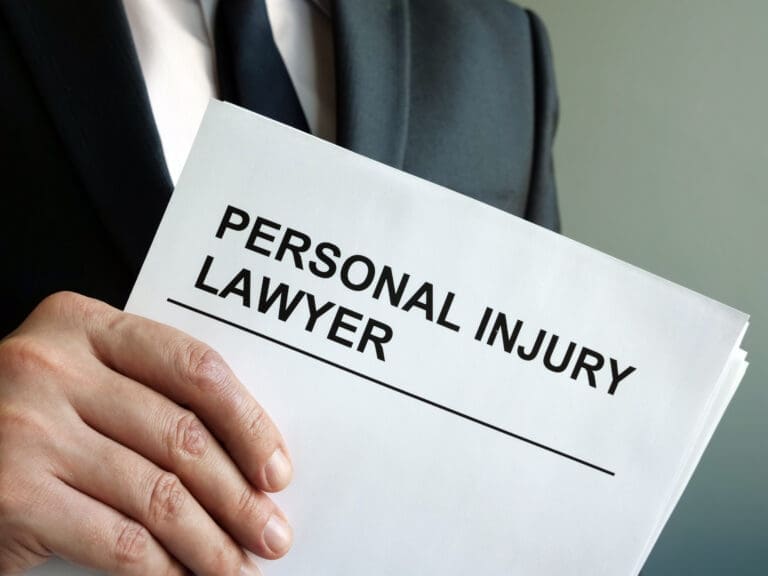
The American legal system rests upon a foundation of truth-seeking, where witness tampering penalties serve as essential guardians of judicial integrity. When individuals attempt to corrupt this process by influencing testimony through threats, bribes, or other improper means, they undermine the very machinery of justice. The consequences for such interference are appropriately severe, reflecting the fundamental importance of witness testimony to our adversarial system. Understanding the scope and severity of these penalties requires examining both federal and state approaches to punishing those who would obstruct justice through witness interference.
The legal system’s response to witness tampering reflects a recognition that justice cannot function when witnesses fear speaking truthfully or are induced to lie. Courts and legislatures have developed increasingly robust penalties to deter such conduct, with federal statutes providing for decades of imprisonment in the most serious cases. These penalties serve not merely to punish individual wrongdoers but to protect the integrity of the judicial process itself—a process that depends entirely on the ability of witnesses to testify without improper influence.
Recent high-profile cases have brought renewed attention to obstruction of justice consequences, highlighting the tension between aggressive advocacy and illegal interference. When witnesses face intimidation or inducement to alter testimony, the search for truth becomes impossible. The penalties for such conduct properly reflect its gravity—not merely as an offense against individual witnesses but as an attack on the judicial system itself. By examining these penalties in detail, we gain insight into how our legal system protects its truth-seeking function against those who would corrupt it for personal advantage.
Federal Penalties for Witness Tampering
Federal law addresses witness tampering primarily through 18 U.S.C. § 1512, which establishes a graduated system of penalties based on the severity of the tampering conduct. This comprehensive statute covers virtually every conceivable method of interfering with witness testimony, from murder to harassment, with penalties tailored to the seriousness of the obstructive behavior.
In the most extreme cases, where a defendant kills a witness to prevent testimony, the consequences reach the maximum severity our legal system permits—life imprisonment. This ultimate penalty reflects the recognition that silencing a witness through murder represents the most complete form of obstruction, permanently removing testimony that might have been crucial to the administration of justice. The severity of this penalty appropriately reflects the gravity of permanently silencing a witness through the most violent means.
For cases involving physical force or attempted murder of witnesses, federal law authorizes penalties of up to 30 years imprisonment. This severe sanction applies even when the attempt to silence a witness through violence fails, recognizing that the attempt itself represents a grave threat to the judicial process. Similarly, threats of physical force or intimidation carry penalties of up to 20 years imprisonment, reflecting the recognition that even unsuccessful attempts to influence testimony through fear warrant significant punishment.
State-Level Consequences for Witness Interference
While federal law provides a baseline for witness tampering penalties, state laws create a diverse landscape of consequences that vary significantly by jurisdiction. This variation reflects different approaches to categorizing and punishing obstruction through witness interference, though all states recognize the fundamental threat such conduct poses to the administration of justice.
In Texas, for example, witness intimidation is typically classified as a third-degree felony, carrying potential imprisonment of 2 to 10 years and fines up to $10,000. However, Texas law includes an important enhancement provision—if the underlying case involves a more serious offense, the witness tampering charge can be elevated to match it. In cases involving capital felonies, this means witness tampering can become a first-degree felony punishable by up to 99 years imprisonment or life, plus substantial fines. This approach recognizes that the severity of witness tampering correlates with the seriousness of the underlying proceeding being obstructed.
California takes a somewhat different approach, with witness tampering generally punishable by up to four years imprisonment and fines up to $10,000. New York’s system provides for even more severe penalties in cases involving violence, classifying witness tampering in the first degree as a class B felony punishable by up to 25 years imprisonment. These variations reflect different legislative judgments about the appropriate punishment for interfering with witnesses, though all recognize the fundamental threat such conduct poses to the judicial process.
Distinguishing Between Forms of Witness Tampering
The legal system distinguishes between different forms of witness tampering, with penalties varying based on the methods employed and the intent behind them. This graduated approach recognizes that not all interference with witnesses presents the same degree of threat to the judicial process, though all forms undermine the search for truth.
Bribery of witnesses—offering money, gifts, or other benefits in exchange for favorable testimony—represents one common form of tampering. While less violent than threats or intimidation, bribery directly corrupts testimony by creating financial incentives for dishonesty. Federal and state laws recognize the serious nature of this conduct, typically classifying it as a felony with substantial prison terms. The penalties reflect the recognition that purchased testimony fundamentally distorts the truth-seeking function of trials.
Threats and intimidation constitute perhaps the most common form of witness tampering, ranging from explicit threats of violence to more subtle forms of pressure. The legal system typically reserves its most severe penalties for cases involving threats of physical harm, recognizing the particularly coercive nature of such threats. However, even non-violent intimidation can carry significant penalties, as it similarly undermines the integrity of testimony through fear rather than financial inducement.
The Role of Intent in Obstruction Prosecutions
Successful prosecution for witness tampering requires proving specific intent to influence testimony or prevent communication with law enforcement. This intent requirement serves as an important limitation on obstruction charges, ensuring that innocent interactions with witnesses do not become criminalized. Prosecutors must demonstrate that the defendant acted with the specific purpose of altering testimony or preventing cooperation with authorities.
The intent standard varies somewhat between federal and state jurisdictions, but generally requires showing that the defendant’s primary purpose was to influence the judicial process through witness interference. This means that merely discussing a case with a witness, without intent to influence their testimony improperly, would not constitute tampering. Similarly, providing factual information to a witness, without intent to alter their testimony, falls outside the scope of tampering statutes.
Proving intent often presents the greatest challenge in witness tampering prosecutions, as it requires demonstrating the defendant’s mental state. Prosecutors typically rely on circumstantial evidence, including the timing of communications, the relationship between the defendant and witness, and the content of communications. Direct pruebas of intent, such as explicit threats or offers of payment in exchange for specific testimony, provides the clearest basis for prosecution but is often unavailable in more subtle cases of tampering.
Procedural Aspects of Witness Tampering Cases
Prosecuting witness tampering presents unique procedural challenges, as the very nature of the offense often involves attempts to undermine the judicial process. These cases frequently involve vulnerable witnesses who may remain fearful despite the tampering charges, creating difficulties in securing testimony about the tampering itself. Prosecutors must navigate these challenges while ensuring that the defendant’s due process rights remain protected.
The timing of witness tampering charges adds another layer of complexity. In many cases, tampering occurs during an ongoing investigation or prosecution, requiring prosecutors to address the tampering while simultaneously pursuing the underlying case. This parallel prosecution can create strategic complications, as evidence of tampering may be relevant to the underlying case but potentially prejudicial if introduced before a jury.
Witness protection becomes particularly important in tampering cases, as witnesses who have already faced interference may require additional security measures to ensure their safety and continued cooperation. Federal and state witness protection programs provide various levels of protection, ranging from simple escort services during court appearances to comprehensive relocation and identity changes in the most serious cases. These protective measures represent an essential component of the system’s response to tampering, ensuring that witnesses can testify truthfully despite prior attempts at interference.
Constitutional Dimensions of Obstruction Prosecutions
Witness tampering prosecutions inevitably implicate constitutional considerations, particularly regarding the defendant’s First Amendment rights to free speech and Sixth Amendment rights to prepare a defense. Courts have consistently held that the First Amendment does not protect speech intended to obstruct justice through witness interference, recognizing that such speech falls into the category of unprotected criminal conduct rather than protected expression.
The line between legitimate defense investigation and improper witness contact creates particularly difficult constitutional questions. Defendants have a Sixth Amendment right to investigate their cases and interview potential witnesses, activities that necessarily involve witness contact. Courts have generally resolved this tension by focusing on the intent behind the contact—legitimate fact-gathering remains protected, while attempts to influence testimony improperly constitute tampering.
Due process considerations also arise in witness tampering prosecutions, particularly regarding the government’s burden of proof and the defendant’s right to confront witnesses. Courts have generally required that tampering be proven beyond reasonable doubt, like any other criminal offense, despite the challenges this standard may present in cases involving fearful witnesses. Similarly, defendants retain their confrontation rights regarding witnesses testifying about alleged tampering, though courts may permit certain protective measures for vulnerable witnesses consistent with constitutional requirements.
Tampering in High-Profile Cases
Recent high-profile cases have brought renewed attention to witness tampering, highlighting both the temptation to interfere with witnesses in significant cases and the serious consequences such interference can bring. These cases demonstrate that even wealthy or powerful defendants face substantial penalties when they attempt to corrupt the judicial process through witness interference.
The ongoing federal case against Sean “Diddy” Combs has featured allegations of witness tampering, with prosecutors claiming he attempted to blackmail witnesses in his federal sex-trafficking and racketeering case. According to court filings, evidence obtained from Combs’ jail cell indicated he had threatened one witness and was attempting to interfere with others. Prosecutors alleged that Combs utilized three-way phone calls and the phone codes of fellow inmates to evade detection, describing the alleged tampering as “an accusation typically observed in mob-related trials.”
Another recent example involves blogger Aidan Kearney, known as “Turtleboy,” who faces witness intimidation charges related to the Karen Read murder case. Authorities allege Kearney targeted a witness by addressing a security camera positioned outside a pizza establishment owned by the witness. The special prosecutor characterized Kearney’s approach to witnesses as a form of “water torture,” explaining that “It’s not just the immediate drop; it’s the cumulative effect.” These cases demonstrate the breadth of conduct that can constitute witness tampering, from direct threats to more subtle forms of pressure or intimidation.
Defenses in Witness Tampering Prosecutions
Defendants facing witness tampering charges have several potential defenses available, though their viability depends on the specific facts of each case. Understanding these defenses provides insight into the limitations of tampering prosecutions and the protections available to those accused of improper witness interference.
Lack of intent provides the most common and often most effective defense in tampering cases. If the defendant can demonstrate that their contact with witnesses was not intended to influence testimony improperly, but rather represented legitimate fact-gathering or innocent communication, the intent element of tampering cannot be established. This defense recognizes the important distinction between improper influence and legitimate witness contact.
Constitutional defenses may also apply in certain tampering cases, particularly where the alleged tampering involved speech that might be constitutionally protected. While the First Amendment does not protect speech intended to obstruct justice, defendants may argue that their communications fell short of true obstruction and instead represented protected expression. Similarly, defendants may raise Sixth Amendment claims if tampering charges interfere with legitimate defense investigation.
The Relationship Between Tampering and Underlying Offenses
Witness tampering charges frequently arise in connection with other criminal proceedings, creating a complex relationship between the tampering offense and the underlying crime. This relationship affects both the prosecution strategy and the potential consequences for defendants found guilty of both offenses.
In many jurisdictions, tampering penalties increase based on the severity of the underlying offense. This enhancement recognizes that tampering in serious cases, such as murder or terrorism prosecutions, presents a particularly grave threat to the administration of justice. The Texas approach exemplifies this principle, with tampering penalties potentially rising to match the level of the underlying offense, up to and including life imprisonment for tampering in capital cases.
Sentencing considerations also reflect the relationship between tampering and underlying offenses. Courts typically view tampering as an aggravating factor when sentencing for the underlying crime, often imposing consecutive rather than concurrent sentences to reflect the distinct harm caused by each offense. This approach recognizes that tampering represents a separate attack on the judicial process, distinct from the underlying criminal conduct and warranting separate punishment.
Administrative and Civil Consequences
Beyond criminal penalties, witness tampering can trigger significant administrative and civil consequences that further increase the cost of such misconduct. These additional consequences may affect professional licensing, employment opportunities, and civil liability, extending the impact of tampering beyond the criminal justice system.
Professional licensing bodies typically take a severe view of witness tampering, particularly for licensed professionals such as attorneys, physicians, or financial advisors. A tampering conviction often triggers disciplinary proceedings that can result in license suspension or revocation, effectively ending careers even after criminal penalties have been served. This professional consequence reflects the recognition that tampering demonstrates a fundamental dishonesty incompatible with many licensed professions.
Civil liability may also arise from witness tampering, particularly where the tampering caused identifiable harm to specific individuals. Witnesses who suffered threats or intimidation may have civil claims against those responsible, potentially resulting in substantial damage awards. Similarly, parties whose legal proceedings were corrupted by tampering may have civil remedies against the responsible individuals, creating another layer of consequences beyond criminal penalties.
International Approaches to Witness Protection
The United Nations Convention Against Corruption (UNCAC) establishes international standards for addressing witness tampering, recognizing that protection of witnesses and prevention of tampering represent essential components of any effective anti-corruption system. Article 15 of UNCAC specifically addresses obstruction of justice, outlining acts that constitute this offense, including destroying evidence, intimidating witnesses, and interfering with testimony.
Different countries have developed varied approaches to witness protection and tampering prevention, reflecting their distinct legal traditions and practical constraints. Some nations emphasize physical protection of witnesses, providing security details or relocation services for those facing serious threats. Others focus on procedural protections, such as allowing anonymous testimony or testimony via video link to reduce witness vulnerability.
The effectiveness of these international approaches varies significantly, with resource constraints often limiting implementation in developing nations. However, the international consensus reflected in UNCAC demonstrates the universal recognition that witness tampering threatens the rule of law and requires robust countermeasures, regardless of the specific legal system involved.
Technological Dimensions of Modern Witness Tampering
Technological advances have created new methods of witness tampering while simultaneously providing new tools for detecting and preventing such misconduct. Social media platforms, encrypted messaging applications, and other digital communication channels provide new avenues for contacting and potentially influencing witnesses, often with a degree of anonymity that complicates investigation.
Law enforcement agencies have responded to these challenges by developing specialized units focused on digital evidence collection and analysis. These units employ sophisticated techniques to trace digital communications, identify their sources, and document tampering attempts that occur through electronic means. This technological arms race between tamperers and investigators continues to evolve as new communication platforms emerge.
Courts have adapted to these technological changes by expanding traditional tampering prohibitions to cover digital communications. Most jurisdictions now explicitly recognize that threats or inducements conveyed through electronic means constitute tampering just as surely as in-person communications. Similarly, court orders prohibiting witness contact typically extend to all forms of communication, including social media, text messaging, and other digital platforms.
Prevention Strategies and Witness Protection
Preventing witness tampering requires a multifaceted approach that combines legal prohibitions with practical protective measures for vulnerable witnesses. The federal Witness Security Program, commonly known as WITSEC, represents perhaps the most comprehensive protection system, providing relocation, new identities, and financial support for witnesses facing serious threats. While resource-intensive, this program has proven remarkably effective at ensuring witness safety in the most dangerous cases.
State and local jurisdictions typically offer more limited protection measures, ranging from temporary housing during trials to escort services for court appearances. These more modest programs reflect the resource constraints facing most jurisdictions, though they still provide essential protection for witnesses who might otherwise face intimidation or harm.
Beyond formal protection programs, prosecutors employ various strategies to minimize witness vulnerability, including expedited testimony, protective orders limiting disclosure of witness information, and careful management of court records to protect witness identities where legally permissible. These procedural protections complement the criminal penalties for tampering, creating a system that both deters interference and protects witnesses when deterrence fails.
Ethical Considerations for Legal Practitioners
Attorneys face particular ethical challenges regarding witness contact, as they must balance zealous advocacy with their obligation not to obstruct justice through improper witness influence. Legal ethics rules in all jurisdictions prohibit attorneys from instructing or encouraging witnesses to testify falsely, though they permit preparation of witnesses through discussion of anticipated testimony.
The line between proper preparation and improper influence creates difficult judgment calls for practicing attorneys. Generally accepted practice permits discussing the factual and legal issues with witnesses, reviewing prior statements to refresh recollection, and explaining courtroom procedures to reduce witness anxiety. However, suggesting specific testimony, instructing witnesses to omit relevant information, or pressuring witnesses to change their accounts crosses into unethical and potentially criminal territory.
Violations of these ethical boundaries can result in severe professional consequences, including disbarment, in addition to potential criminal liability for witness tampering. The legal profession’s self-regulation in this area reflects the recognition that attorneys, as officers of the court, bear special responsibility for preserving the integrity of the judicial process against improper influence.
Historical Evolution of Tampering Prohibitions
The prohibition against witness tampering has deep historical roots, reflecting the long-standing recognition that justice requires truthful testimony free from improper influence. Early English common law recognized various forms of “obstruction of justice” as serious offenses, including intimidation of witnesses and jurors. These prohibitions traveled to American shores with the common law tradition, forming the foundation for later statutory developments.
The modern statutory framework addressing witness tampering emerged primarily in the twentieth century, with significant expansions during the 1970s and 1980s in response to organized crime prosecutions. These expansions reflected the recognition that sophisticated criminal organizations routinely employed witness intimidation to evade justice, requiring more comprehensive legal tools to address such obstruction.
The Civil Asset Forfeiture Reform Act of 2000 (CAFRA) included important provisions strengthening witness protection and increasing penalties for tampering, reflecting continued legislative attention to this threat to the judicial process. This historical evolution demonstrates the consistent recognition that protecting witnesses from improper influence represents an essential component of a functioning justice system, with each generation adapting the specific prohibitions to address emerging threats.
Conclusión
The severe penalties for witness tampering reflect its status as an attack not merely on individual witnesses but on the judicial process itself. When witnesses cannot testify truthfully due to threats, bribes, or other improper influence, the search for truth becomes impossible, and justice cannot be achieved. The graduated penalty structure found in federal and state laws appropriately reflects the varying severity of tampering conduct, from harassment to murder, while consistently recognizing the fundamental threat all such conduct poses to judicial integrity.
Recent high-profile cases demonstrate that witness tampering remains a significant concern in modern litigation, with defendants at all levels sometimes succumbing to the temptation to influence testimony improperly. The severe consequences imposed in these cases—including decades of imprisonment in the most serious instances—serve both specific and general deterrence functions, discouraging others who might consider similar interference with witnesses.
As technology continues to evolve, creating new methods of witness contact and potential intimidation, the legal system must adapt its approach to tampering while maintaining its fundamental commitment to protecting witnesses and the integrity of their testimony. This ongoing adaptation reflects the enduring recognition that truthful testimony, free from improper influence, remains essential to justice—a principle that transcends specific legal rules and technological changes to touch the very foundation of our legal system.
Citations:
- Witness Tampering Defense Strategies
- Obstruction of Justice Legal Overview
- Witness Tampering Penalties in El Paso
- Understanding Witness Tampering Basics
- Protecting Rights in Witness Tampering Cases
- Obstruction in Federal Investigations Explained
- Federal Witness Tampering Legal Insights
- Diddy Witness Tampering Jail Case
- Witness Tampering Legal Consequences Guide
- Obstruction of Justice in Colorado Cases
- State and Federal Witness Tampering Implications
- Turtleboy Blogger Witness Intimidation Case
- FreedomGPT on Obstruction of Justice
- US Code on Witness Tampering Laws
- Justice Manual on Witness Tampering Protection
- Federal Law on Witness Tampering Penalties
- Florida Statute on Witness Tampering
- US Code Chapter on Obstruction of Justice
- Wikipedia on Witness Tampering Definition
- Obstruction of Justice in the US
- Broward Witness Tampering Defense
- Third Circuit Obstruction Revisions
- Criminal Obstruction Penalties Explained
- LegalMatch on Witness Tampering Laws
- Obstructing Justice Definition Insights
- NYT on Adams Aide Corruption Plea
- Atlantic City Mayor Indicted for Tampering
- Trump Trial Language Analysis
- Brennan Center Against Filibuster
- BBC on Witness Tampering Issues
- ProPublica on Trump Witness Benefits
- NBC on Trump Justice Department Shadow
- ICE Arrests Haitian Alien for Tampering
- Judge Rules on Witness Tampering Evidence
- Diddy Legal Team Reacts to Tampering Claims
- WashU Law Review on Obstruction Cases
- Addressing Witness Tampering Efforts
- Chicago Unbound on Justice Obstruction
- Top Google Ads Keywords for Law Firms
- Ohio Revised Code on Criminal Laws
- Evolving Corrupt Intent in Obstruction Cases
- SEO Keyword Research for Attorneys
- Common Defenses for Witness Tampering
- Role of Intent in Federal Obstruction Cases
- Popular Law Keywords for Marketing
- Dissuading a Witness or Victim Defense
- FindLaw on Witness Tampering Charges
- YouTube on Witness Tampering Insights
- Corrupt Persuasion in Tampering Cases
- Congressional Report on Obstruction Laws
- Obstruction of Justice Definition and Examples
- Proving Corrupt Persuasion in Tampering Cases
- Utah Law Review on Obstruction Issues
- Federal Law on Witness Tampering Penalties
- US Code on Witness Tampering Statutes
- FindLaw on Obstruction of Justice Laws
- Supreme Court Rulings on Presidential Immunity
- Trump Backs Cheney Witness Tampering Claims
- Mayor Adams Court Hearing on Bribery Charges
- FBI Probe Sought on Cheney Tampering Allegations
- Atlantic City Mayor Indicted for Tampering
- Riverside Witness Dissuasion Defense Guide
- BYU Law Review on Justice Obstruction
- Keyword Strategies for Lawyers
- Cornell on Obstruction of Justice Laws
- Finding Keywords for Legal Content








